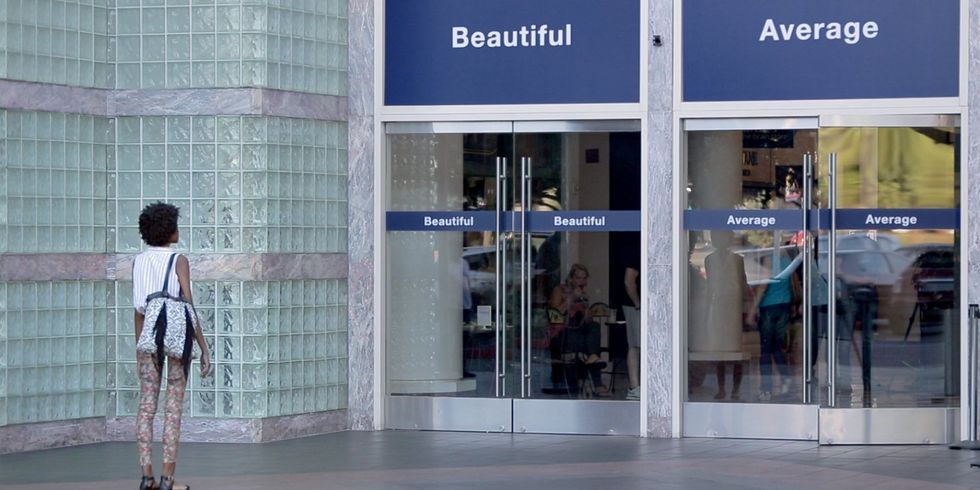In 2015, Dove did an experiment where they put signs over 2 side-by-side entryways around the country*. One was marked “Beautiful” and one was marked “Average”. Ninety six percent of the women who walked through the doors walked through the “average” door. That means that more than nine in ten women who walked through the doors consider themselves average-looking. 9 in 10. For every 10 women in a room, approximately one of them considers themself beautiful. This isn’t only an American study, this study was done across the globe, which means that women around the world are convinced they don’t deserve to be categorized as beautiful. Who taught them that? Or better yet, who didn’t teach them that they’re allowed to think of themselves as beautiful?
In my mind, one of the biggest factors in their choice was the publicity aspect. Those women were forced to decide in public, in front of others, if they believed they were beautiful. If a small group of women are together in one space with no obvious common interest, they’re virtually guaranteed to compliment each other’s looks followed by a “modest” response of
“No, oh my goodness, you’re so much prettier/you’re hair is so much nicer/I love your outfit more/oh thank you but today isn’t one of my good days…”
Men have sports, women have beauty. Maybe that’s a huge generalization, but women are constantly thrust into competition with each other and with themselves. Who can be more modest, more self-effacing, yet still appear effortlessly beautiful? The compliments are challenges. If a woman responds to a compliment with,
“Thank you, I know, this dress is my favorite!/Thanks! My hair does look great today!/I really put a lot of effort into looking nice today and it totally paid off…”
she risks being seen as vain or self-centered. Women everywhere walk along a tightrope, not wanting to lean to either side towards conceited or self-loathing. The line between too much and too little is very thin.
Not only are women pinned in competition against each other, but they’re also in competition with themselves. How can one unique woman change herself to the current beauty standard? What is the beauty standard? How does she find that out? How can she mold herself to fit into the tiny box of beauty society constructs for us?
When women are faced head on with a choice, “average” or “beautiful”, 9 out of 10 will choose “average”. Women are bombarded with images on social media, TV, in school, in magazines, on billboards; wherever they go, they are forced, we are forced, to see ourselves as less than ideal. It’s almost as if the word “beautiful” is saved specifically for those people that are the magazine, the commercial, the billboard, the instagram model. The word “beautiful” has become such an exclusive concept that women don’t believe they’re deserving of the label.
What women need to learn and take away from the Dove experiment is that considering yourself “beautiful” isn’t a label that you can earn. Being beautiful isn’t an achievable goal. Beauty is a natural born trait that every woman (and man) is born with. I’m not naive, I know there will always be standards that women feel they must live up to. The Dove experiment, though, is the first step towards pushing women past the idea of beauty as an unattainable reach, and into acceptance that they were born beautiful. Women around the world face so many issues that need immediate solutions, solutions that will last forever. One of the primary changes that must be made in order to solve those issues is to teach women that they are not only beautiful, but worthy, courageous, and strong. Dove has taken the first leaps toward that goal.






















